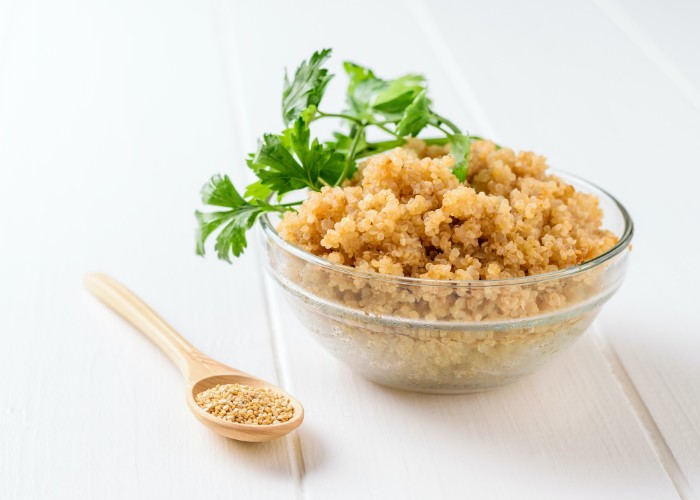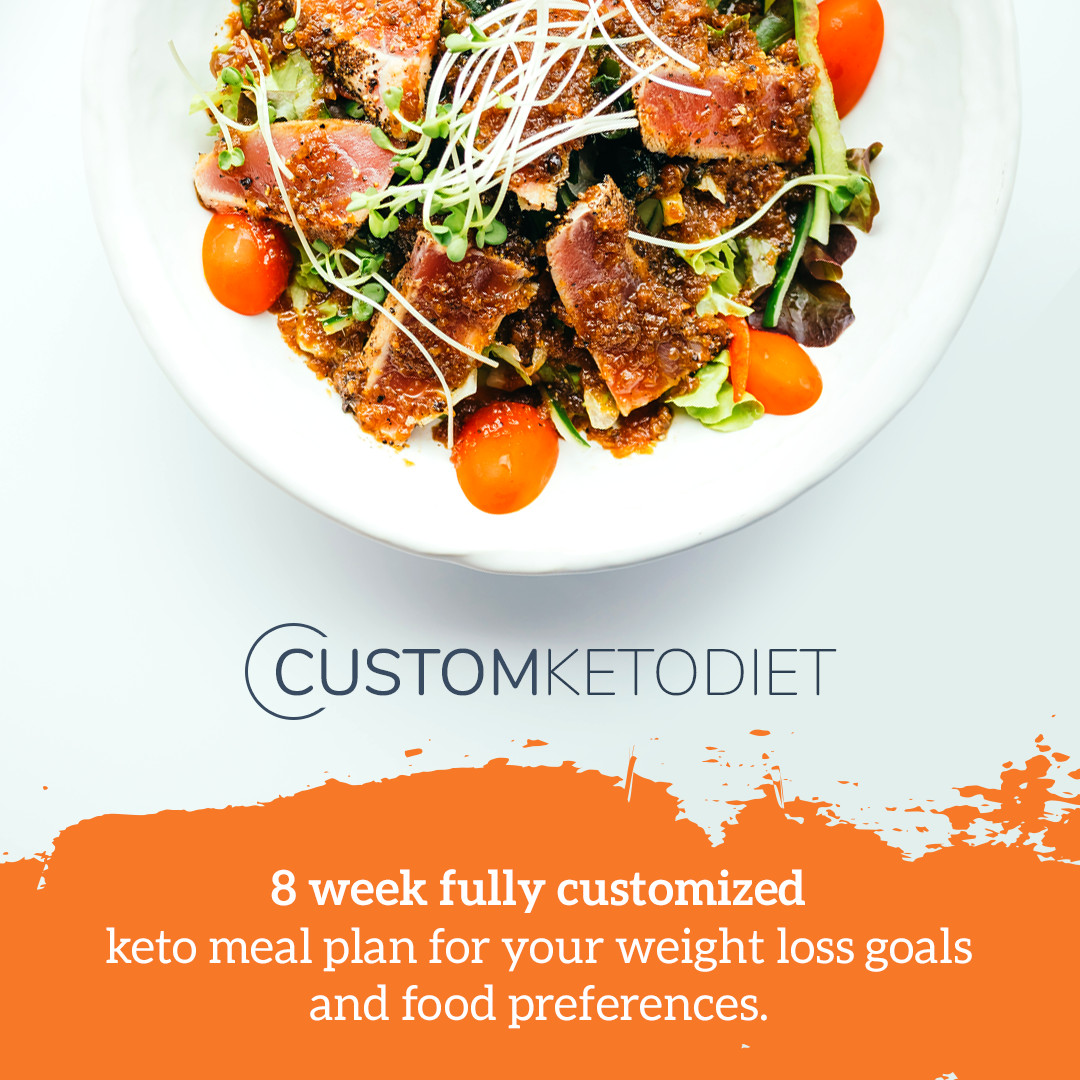Health benefits and nutritional content of quinoa, plus how to make perfectly fluffy quinoa at home
Quinoa is a popular healthy food today. It tastes great but people also add quinoa to their diet to reap all the quinoa benefits such as improved digestive health, great gluten-free food for people with gluten intolerance, may help with weight loss and so much more.
In this post, you can read about the benefits of quinoa, nutritional facts, possible side effects and allergies, and also, how to cook perfectly fluffy quinoa at home.
Before we go deeper in these sections let’s see some interesting facts for quinoa:
- Quinoa was a staple food of the ancient civilizations of the Andes of South America and is mainly grown in the Andean countries of Peru and Bolivia.
- Bolivia is the main exporter of quinoa in the world, followed by Peru and Ecuador.
- NASA has proposed quinoa as an ideal food for long-duration space flights.
- Inca warriors ate balls of quinoa and fat to keep them going on long marches and in battle.
- Chicha is a traditional Andean beer brewed from fermented quinoa.
This post may contain affiliate links, which means we may receive a small commission, at no cost to you, if you make a purchase through a link. For more information, please see our disclosure.
What is quinoa?
Quinoa is a gluten-free mineral-rich seed that is rich in protein and easy to cook. Quinoa (pronounced KEEN-waah) acts as a whole grain, but it is a seed from a weed-like plant called goosefoot, which is related to spinach and beets.
It’s often called a “pseudo-grain” because it’s similar in nutrients and eaten the same way as cereal grains.
There are more than 3,000 varieties of quinoa, but the most grown types are white, black, and red. White quinoa is the most used variety, takes the shortest amount of time to cook. Also, white quinoa has the least crunchy texture and mildest flavor.
Black quinoa is the most flavorful and crunchiest, also requires the longest cooking time. The red variety is in the middle when it comes to flavor and time to cook.

Before cooking quinoa resembles the shape of a very small see. After cooking quinoa triples in size and becomes fluffy grain. Some say that quinoa has the same texture as rice, while some describe it as chewier.
The texture can vary based on how long you cook it and how much water it is cooked in. Like rice and other mild grains, quinoa absorbs the flavor of whatever sauce or dressing you choose to serve with it.
Quinoa benefits
Before we jump into the health benefits of quinoa let’s see what are the nutritional facts for quinoa. Compared with refined grains, whole grains like quinoa are considered better sources of protein, fiber, B vitamins, and iron.
Nutrition facts for quinoa

Very high in protein
As you can see from the nutritional table in just 1 cup (185 grams) of cooked quinoa there are 8 grams of high-quality protein. We say extra quality protein because quinoa contains sufficient amounts of all the essential amino acids.
Protein is made of amino acids, nine of which are called essential ( your body can’t produce them ). If a food contains all nine essential amino acids it’s referred to as complete protein.
By dry weight, quinoa provides 16% protein which is higher than most cereal grains, like rice, barley, and corn.
Further, it contains high amounts of amino acid lysine, which is not present in most plants. It’s also rich in histidine and methionine, making it an excellent plant-based protein source.
High fiber content, much higher than most grains
In 1 cup (185 g) of quinoa, there are 5.18 grams of fiber, which is equal to at least 15.42% of a person’s daily requirement, depending on their age or sex.
Unfortunately, most of the quinoa’s fiber is insoluble which doesn’t appear to have the same health benefits as soluble fiber. But with 2.5 grams of soluble fiber per 185 grams, this is still quite a good amount.
Consuming enough fiber can help reduce the risk of several health conditions like constipation, high cholesterol, reduce blood sugar levels, increase fulness, and aid weight loss. You can see more about the effect of fiber from quinoa on blood sugar levels and weight loss down here in our section of quinoa’s health benefits.
Fat
A 185 grams serving (1 cup) of cooked quinoa provides 3.55 grams of fat which is mainly composed of oleic acid, palmitic acid, and linoleic acid.
It provides 25% of your daily magnesium needs
One cup of quinoa provides 118 milligrams of magnesium or about 25% of the daily recommended intake. Magnesium is often lacking in our Western diet and is so important for many processes in our body.
Magnesium helps to relax blood vessels, helps with blood sugar control, body temperature regulation, energy production, detoxification, and more. Magnesium deficiency is linked to headaches, insomnia, and muscle cramps.
Good plant-based source of iron
Mineral required for the proper function of hemoglobin, which transports oxygen in the blood to cells throughout the body.
The daily recommended amount of iron is from 8 and 18 milligrams a day, depending on age and gender. Quinoa provides almost 3 milligrams of iron per cup.
Provides half of your daily requirement for manganese
Manganese helps to maintain healthy mitochondria during energy production and also protects the cells from free radical damage.
The daily adequate intake level of manganese is 2.3 milligrams. Just one cup of quinoa will obtain 1.2 milligrams of manganese which is more than half of your daily needs.
Other plant compounds
Many plant compounds contribute to quinoa benefits and its flavor too. They include:
- Saponin – Protects quinoa seeds against insects. They are bitter and usually eliminated by soaking or washing before cooking.
- Quercetin – Polyphenol antioxidant that helps protect against various illnesses.
- Kaempferol – Antioxidant that helps in reducing the risk of chronic diseases.
- Squalene – Acts as an antioxidant.
- Phytic acid – May reduce the absorption of some minerals like iron and zinc. This acid can be reduced by soaking or sprouting quinoa before cooking.
- Oxalates – May bind with calcium and reduce its uptake.
Good To Know
Bitter varieties of quinoa are richer in antioxidants than sweeter types. Keep in mind that antioxidant levels may decrease with cooking.
According to study quinoa and related crops are better sources of flavonoid antioxidants than cranberries, which are very rich in flavonoids. Also, another research from 2009 showed that quinoa had the highest antioxidant content 10 common kinds of cereal, pseudocereals, and legumes.
Now let’s see how these compounds explained in our section for the nutrition of quinoa have positive effects on our health and why eating quinoa is good for you!
Health benefits of quinoa according to science
Gluten-free and excellent choice for people with gluten intolerance
Quinoa is naturally gluten-free and can be eaten safely if someone has gluten intolerance such as those with celiac disease. About one-third of people in the US are trying to avoid or minimize gluten.
According to some studies using quinoa in a gluten-free diet, instead of other commonly used gluten-free ingredients like potato, corn, or rice flour, dramatically increases the antioxidant and nutrient value of your diet.
Further, quinoa-based products may be a suitable alternative to wheat, both in their original form and in products like bread or pasta.
Good To Know
Although quinoa is technically gluten-free, there is always a risk for contamination because it’s often grown, processed, and cooked with gluten-containing foods like barley and wheat. So, it’s important to read the label and choose a quality brand. Take time to ensure quinoa products are really gluten-free and inform restaurants if you are allergic to gluten.
You can buy your gluten-free quinoa here from Amazon. Here is our choice, this white quinoa is 100% gluten-free and non-GMO verified.
Good for blood sugar control, has a low glycemic index
Another benefit of adding quinoa into your diet is that quinoa has a glycemic index of 53, which is considered very low. The glycemic index is a measure of how quickly foods raise your blood sugar levels. A glycemic index of 55 or below is considered low.
Keep in mind that quinoa is still fairly high in carbs. People with type 2 diabetes or other conditions should watch how many carbs eat. But not all carbs are equal. Quinoa is considered a whole grain, which is better for you than refined grains like white flour.
A controlled study from 2004 compared the effects of quinoa with traditional gluten-free wheat products. The results showed that quinoa lowered blood triglycerides and also affected blood sugar levels to a lesser degree than gluten-free bread, gluten-free pasta, and traditional bread.
Enhances digestive health
As we mentioned before quinoa is rich in fiber. Fiber adds bulk to the food churned in your stomach and this stimulates the walls of your digestive tract.
Your tract contracts and this promotes better absorption of nutrients in the small intestine. Further, in the large intestine, this fiber prevents constipation.
Also, quinoa is good for your digestive health because contains thiamin, riboflavin, and glutamic acid. Thiamin helps in the production of hydrochloric acid (the acid in your stomach that aids digestion), riboflavin helps in the development of cells lined in the walls of the digestive tract.
Glutamic acid is an amino acid that is converted into glutamine in your body. Glutamine is responsible for the health of the mucosal lining of your stomach.
It may help you lose weight
If you want to lose weight you must follow just one simple rule, you need to take in fewer calories than you burn. Maybe simple but many times hard to achieve.
Quinoa belongs to the foods that can promote weight loss by reducing appetite and boosting metabolism.
Protein is a very important factor for weight loss, as it boosts metabolism and feelings of fullness. Protein content in quinoa is higher than similar foods such as corn, rice, and whole wheat.
Fiber on the other hand is also important for weight loss. A high amount of fiber can increase feelings of fulness, as a result of this, you will eat fewer calories overall. Quinoa is higher in fiber than many whole-grain foods.
When we talked about the benefits of quinoa for controlling blood sugar levels we’ve mentioned the glycemic index. The fact that quinoa has a low glycemic index is another important thing.
Low glycemic foods have been shown to prevent overeating and decrease hunger.
Until today there aren’t studies that look at the effects of quinoa on body weight, but the high content of protein, fiber, and low glycemic index is a useful part of every weight loss diet.
Contains high amounts of quercetin and kaempferol
Plant antioxidants called flavonoids offer various health benefits. Two flavonoids found in high amounts in quinoa are quercetin and kaempferol. The quercetin content of quinoa is higher than that in typical high-quercetin foods like cranberries.
Quercetin and kaempferol are known for their anti-inflammatory, anti-viral, and anti-depressant effects. By adding quinoa to your daily meals you will significantly increase your total intake of these important nutrients.
Potential side effects and allergies of quinoa
After reading the sections for nutritional and health benefits of quinoa, we must also mention the possible side effects and quinoa allergies that are not so common but you should be aware of them.
Quinoa is healthy and nutritious part of any diet but for some people eating quinoa may cause stomachaches, itchy skin, hives, and other common symptoms of food allergy. The seeds and their coating contains compound saponin, which could cause these symptoms.
If you are sensitive to saponin it doesn’t mean you shouldn’t eat quinoa, you can still include quinoa in your diet as you wash the seeds well.
Soak quinoa for at least 30 minutes and rinse it several times before cooking. This will help remove the natural coating, which contains saponin.
Saponins also taste really bad – some describe their flavor as bitter, and even soapy. Some quinoa manufacturers have begun pre-washing the seeds but to be on the safe side give it a rinse anyway.
As with any other food allergy, you can experience minor to severe reactions after eating quinoa. See your doctor right away if you have an allergic reaction to quinoa.
How to cook quinoa

Making perfectly fluffy quinoa is so simple. You just need to use twice as much water as quinoa, then cook uncovered until the quinoa absorbs all the water. When the water is absorbed remove the pot from the heat, cover it and let the quinoa steam for 5-6 minutes. That’s it, so simple!
Here are the detailed instructions on how to cook quinoa perfectly:
- 1 cup uncooked quinoa ( any variety, white, golden, red, or black)
- 2 cups water
- Salt, to taste (around 1/4 teaspoon salt per cup dry quinoa)
Instructions:
Rinse the quinoa: Place the quinoa in a fine-mesh strainer. Rinse thoroughly under cool, running water for at least 30 seconds. Rub and swish the quinoa with your hands while rinsing. Drain well.
Rinsing quinoa is an important step because it removes bitterness on the outside of the quinoa, caused by saponins that we’ve talked about in the upper section of possible side effects of quinoa.
Add rinsed quinoa and water in a saucepan: Bring this mixture to a boil over medium heat, then decrease heat a little to maintain a gentle simmer.
Cook around 10-20 minutes, or until quinoa absorbs all the water. Reduce heat as time goes on to maintain a gentle simmer.
Remove the pot from the heat: When you remove the pot from the heat you can cover and let the quinoa steam for 5 minutes.
Uncover and season with salt to taste. Fluff the quinoa gently with a fork and serve. Enjoy!
For an extra flavor, you can add olive oil and a clove of garlic into warm quinoa. Further, you can also add cheese, chopped fresh spinach, kale, or fresh herbs. There are many options it is up to your taste what will you add!
You can use quinoa in different recipes, it is a great base for salads as it can soak up the dressing without becoming mushy.
As a savory side for chicken, grilled veggies, or fish. You can also try these quinoa flakes for breakfast which can be cooked as instant oatmeal or used in place of oats in recipes.
Here you can find more than 40 quinoa recipes that are very tasty and easy to make!
Storage: Leftover quinoa can be refrigerated in an airtight container for 4 to 5 days. Don’t forget to cool it to room temperature before covering and chilling. You can also freeze it for up to 2 months.
Frequently asked questions and answers
Is quinoa keto-friendly?
Quinoa is high in carbs and should be limited if you decide to follow a low carb or keto diet.
Can you reheat quinoa?
Yes, you can reheat quinoa and the easiest way to do it is by using the microwave. Also, the oven and the stovetop are both useful in their own way. When you’re reheating quinoa add 1-3 tablespoons of water for every 1 cup quinoa to help rehydrate it as it cooks.
Can quinoa be cooked in a rice cooker?
Quinoa can be cooked in a rice cooker, just remember the ratio of 1 part quinoa with 2 parts water. Adjust cooking time based on your rice cooker settings.
What is the difference between white and red quinoa?
Red quinoa has a slightly nuttier taste than white quinoa and holds its shape a little longer. Red quinoa is better for dishes such as soups or products you plan to reheat.

Final thoughts about the benefits of quinoa
Quinoa is one of the nutritious foods in the world. Rich in protein, fiber, and antioxidants quinoa is a great gluten-free food, may aid weight loss, helps with blood sugar levels, and improve digestive health.
So delicious and easy to prepare. Just remember to wash it well before cooking. You can use it instead of rice in any recipe, also works well with hot side dishes, cold salads, or as a breakfast grain.
Disclaimer: While we have looked into the research on the health benefits of this food, this is only for informational purposes and should not be construed as medical advice. Those with health-related questions should seek the advice of a medical professional.




